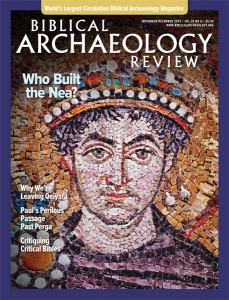What’s Critical About a Critical Edition of the Bible?

Although not widely known, all printed Hebrew Bibles in common use today contain textual difficulties, corruptions and—yes—even errors. Modern translations tend to smooth out difficulties in the original Hebrew. Occasionally some translations, such as the New Jewish Publication Society translation, tell the reader in a footnote that the Hebrew is difficult or that the meaning of Hebrew is unknown, but this only emphasizes that the text is not perfect.
How can there be errors in a text that is venerated as inspired by the word of God and carefully transmitted for centuries?
The answer is that most texts, ancient and modern, that are transmitted from one generation to the next get corrupted in one way or another. For modern compositions, the process of textual transmission from the writing of the original to its final printing is relatively short, thus limiting the possibilities of corruption. But even so, every student of English literature knows, for example, that many mistakes were inserted into editions of James Joyce’s Ulysses as a result of misunderstandings of the author’s corrections in the book’s proof sheets.
Already a library member? Log in here.
Institution user? Log in with your IP address.

